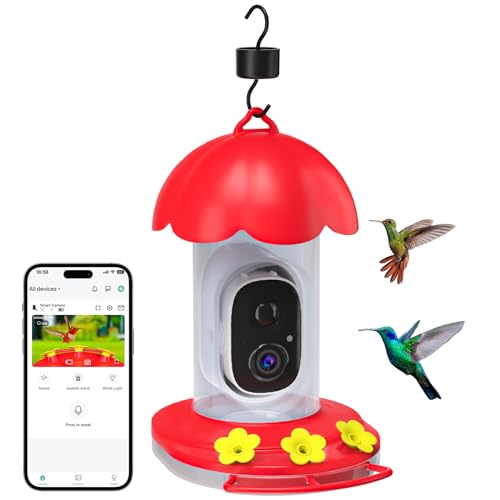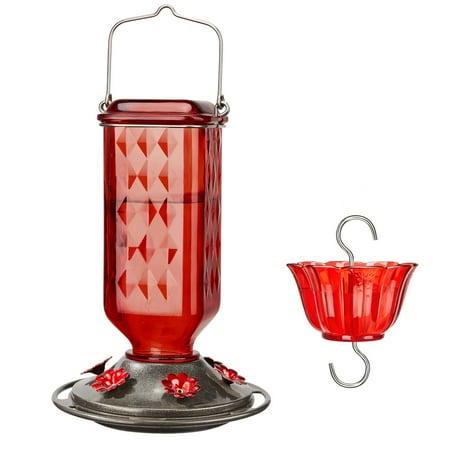When and where to spot hummingbirds in May – these miniature birds are once again on the move across North America
From the Gulf Coast to the Great Lakes, here's when and where to expect hummingbirds in your region
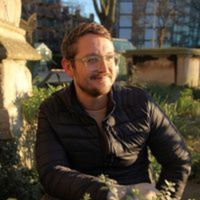

While April can remain cold in the evening in many areas, May typically signals the true arrival of spring, with longer days and warmer weather drawing hummingbirds northward. Typically seen flitting from flower to flower, returning hummingbirds will be a welcome sign for gardeners or birdwatchers this month.
Rufous hummingbirds that have spent the winter in Mexico, for example, are now arriving in California, Oregon and Washington, with some sightings even reported as far north as Alaska and British Columbia. Meanwhile, the easily recognizable ruby-throated hummingbirds will also now be arriving throughout the Midwest and Northeast, making their way back to their breeding grounds as the season advances.
So, as another leg of the hummingbird migration nears completion, we asked experts where and when to expect different species in the coming weeks. Here, we provide a current state of play for hummingbird migration in May, including what to watch out for in your region.
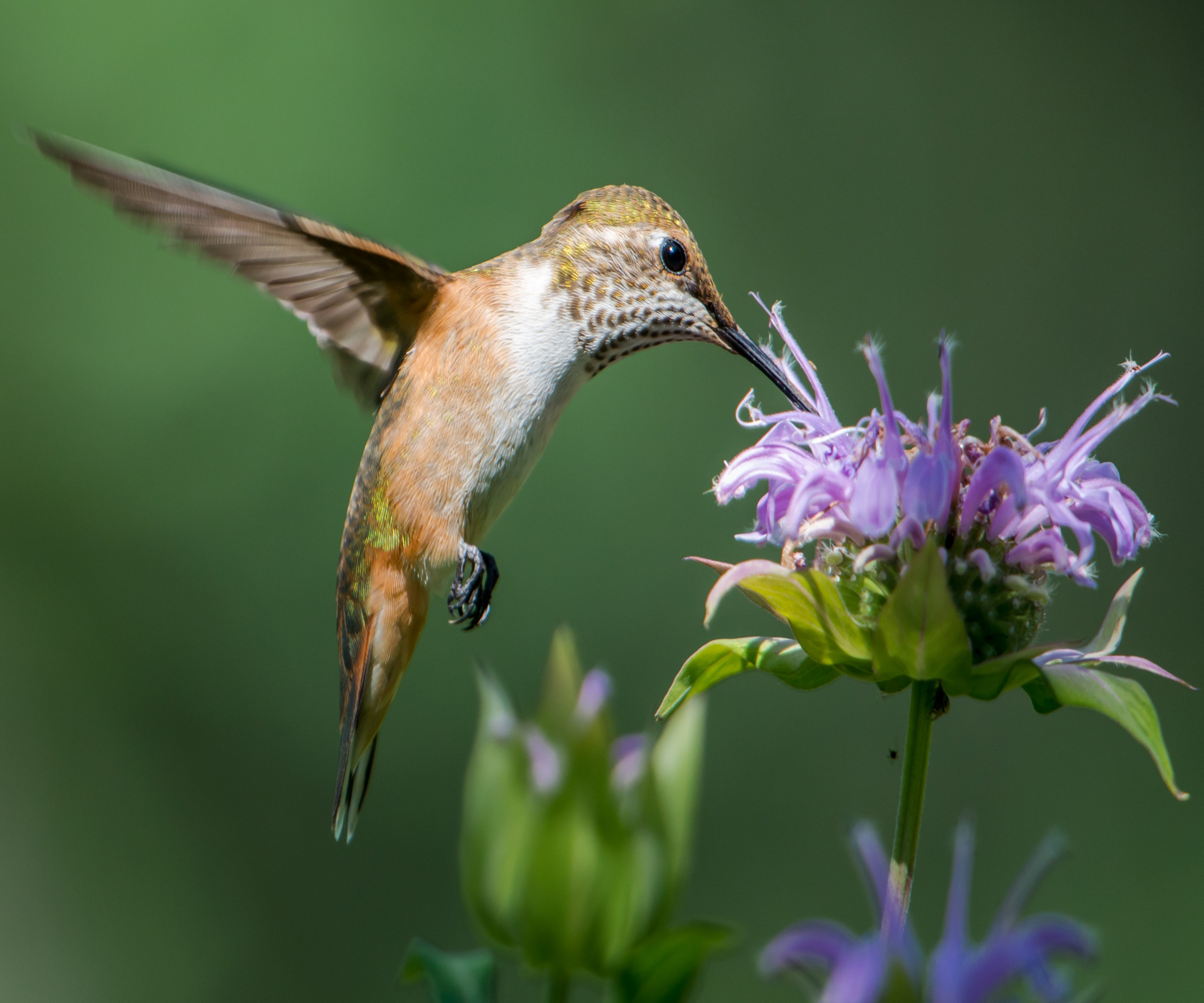
Hummingbird migration in May
This live map from Hummingbird Central is a great resource for birdwatchers and gardeners alike to keep a check on nearby sightings.
If you are anything like me and you want to stay up to date on hummingbird migration in May, this tool will be invaluable. Easy to use and up to date, I have used this map and the wisdom of wildlife experts to identify the movements of certain species this month, as detailed in the text below.
Of course, it will vary from region to region, determined by location, weather patterns and US hardiness zones, and particular species will follow age-old migratory patterns.
For example, the Allen's hummingbird will migrate north along the Pacific coast into California and Arizona, with the males sporting a brilliant reddish-orange throat. Allen's hummingbirds are not known to travel east of the Rocky Mountains, and their migration is linked to winter rains and the emergence of spring blooms on the West Coast.
Design expertise in your inbox – from inspiring decorating ideas and beautiful celebrity homes to practical gardening advice and shopping round-ups.
Here's the species to look out for in your region during May.
Eastern and Central US
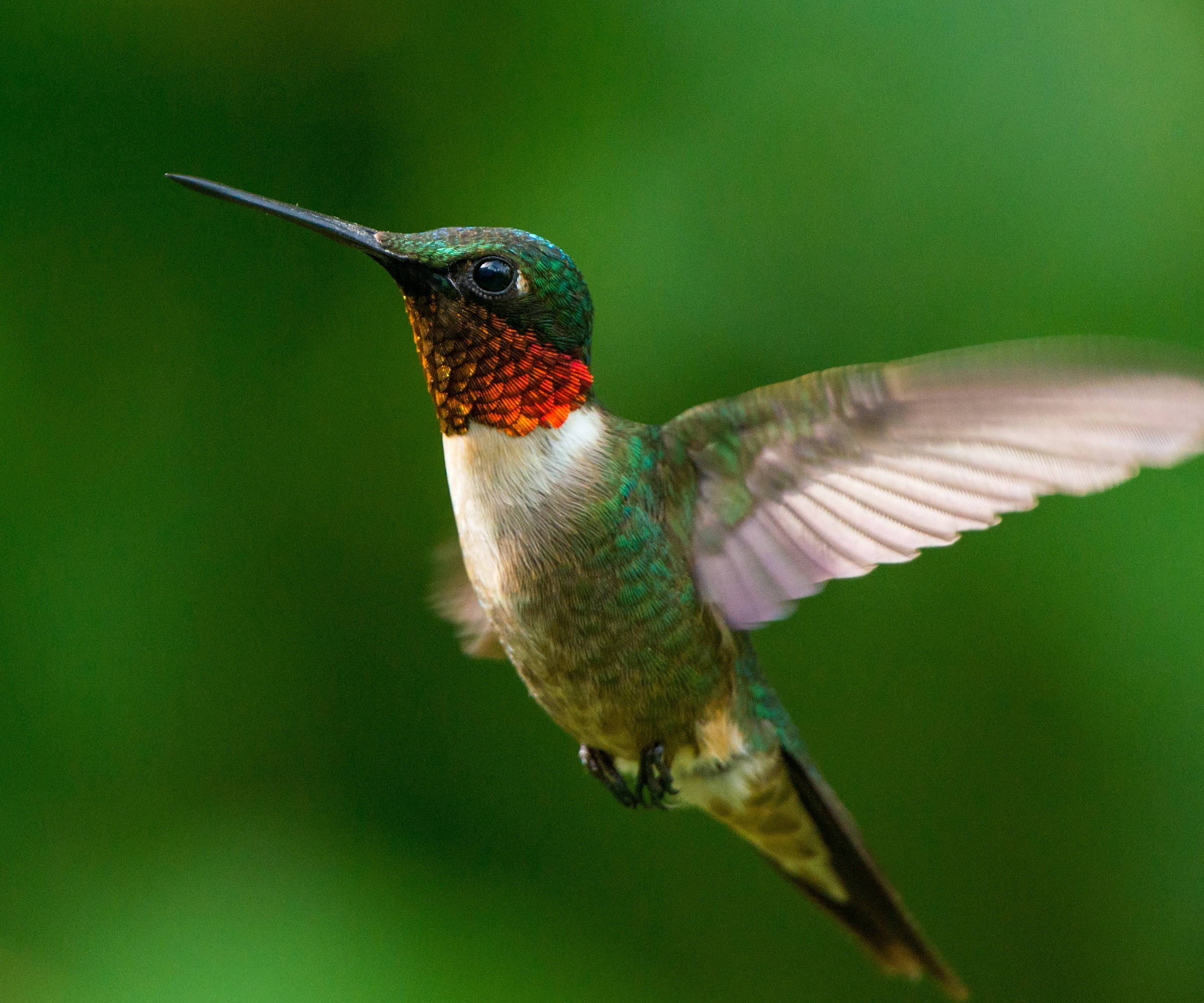
If you are wondering when do hummingbirds return from migration in the eastern and central states, then fear not, May is the month when the majority are either on the move or arriving at their breeding grounds.
'The peak spring migration period is from March to mid-May,' says wildlife expert, Patrick Kelleher.
'Ruby-throated hummingbirds, the most common species and the only prevalent species east of the Mississippi, return from early March in the southernmost states and advance north to the mid states by the beginning of April, finally reaching the northernmost states such as Minnesota, Michigan and Maine by mid-May.'
Even in city environments, including New York and Chicago, there are reports of hummingbirds from May. Keep an eye on native trees with spring blossoms, such as redbuds and honey locusts. While the latter is a plant with thorns and spines, the nectar-rich flowers are known to be a hit with pollinators, especially ruby-throated hummers.
Even if you feel far from nature when commuting into the metropolis, take a wander in your nearby park, such as the High Line, and see if you can spot any ruby-throated specimens this month.
Hummingbirds beat their wings at an almost impossible speed and quickly dash away if you approach. Get up close this spring by using something like these Hontry birdwatching binoculars, available to order via Amazon, which come highly rated and feature a 10x magnification.

Patrick Kelleher, a retired attorney, has been a garden enthusiast and designer for the last 40 years in both the Midwest and Southwest. Patrick grew up and continues to spend summers in the Upper Peninsula of Michigan adjacent to Sylvania National Wilderness, an area known for its diversity of wildlife.
Southern US
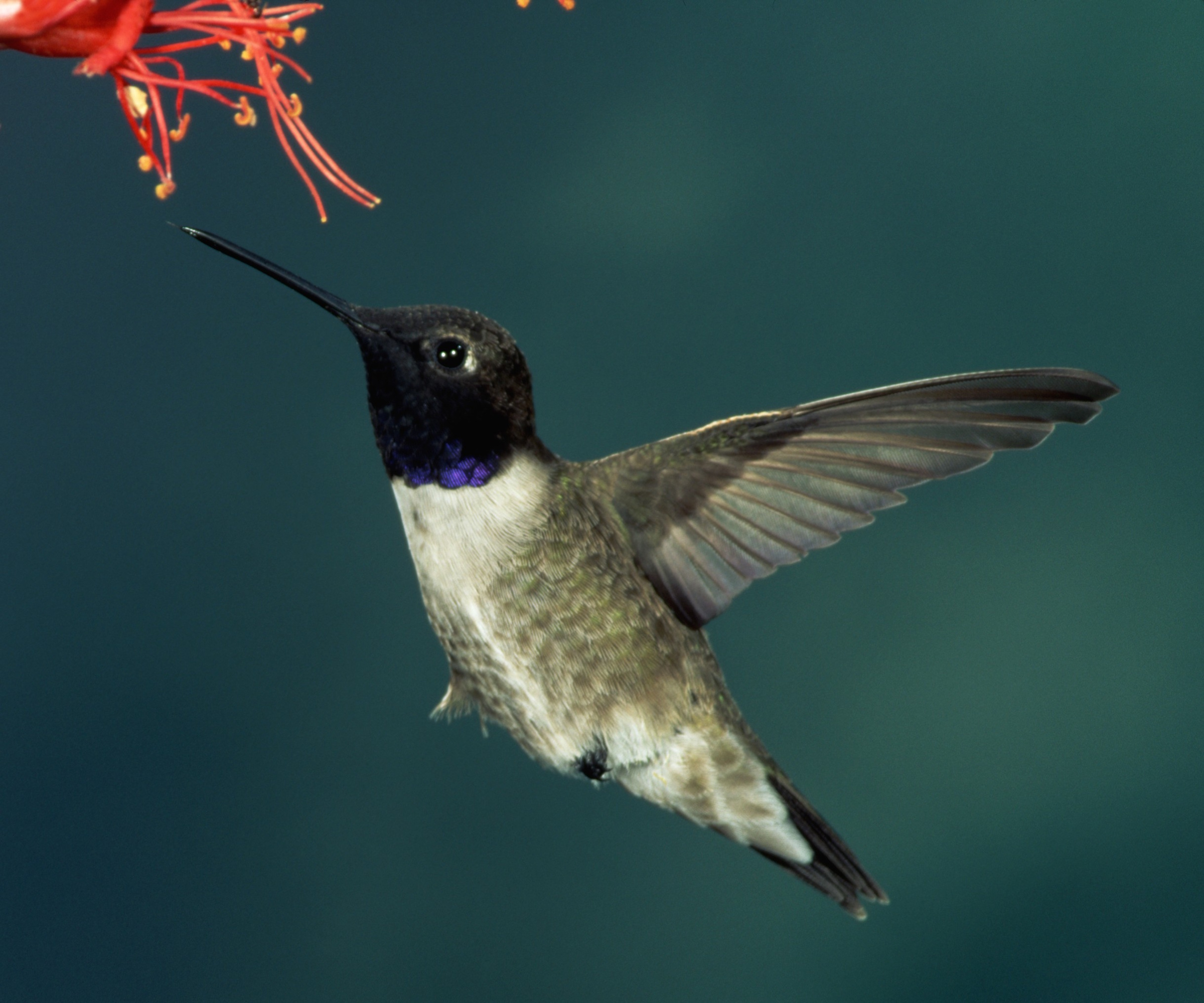
Already this May, there have been plenty of reports of black-chinned hummingbirds arriving across southern states, including Texas and Oklahoma.
In fact, the black-chinned hummingbird is perhaps the most abundant species in the Lone Star State, easily recognizable by its darker coloration around the neck, as seen in the image here.
So, if you are wondering when to put out hummingbird feeders, now is the time. Be sure to keep them clean and replenished, using something like this ready-to-use Electro Nectar from Kaytee, available to order from Amazon.
While they are far rarer than the black-chinned species, there have also been sightings of the buff-bellied hummingbird in Texas, identifiable by its buff-colored belly, red bill and green throat.
Four corners
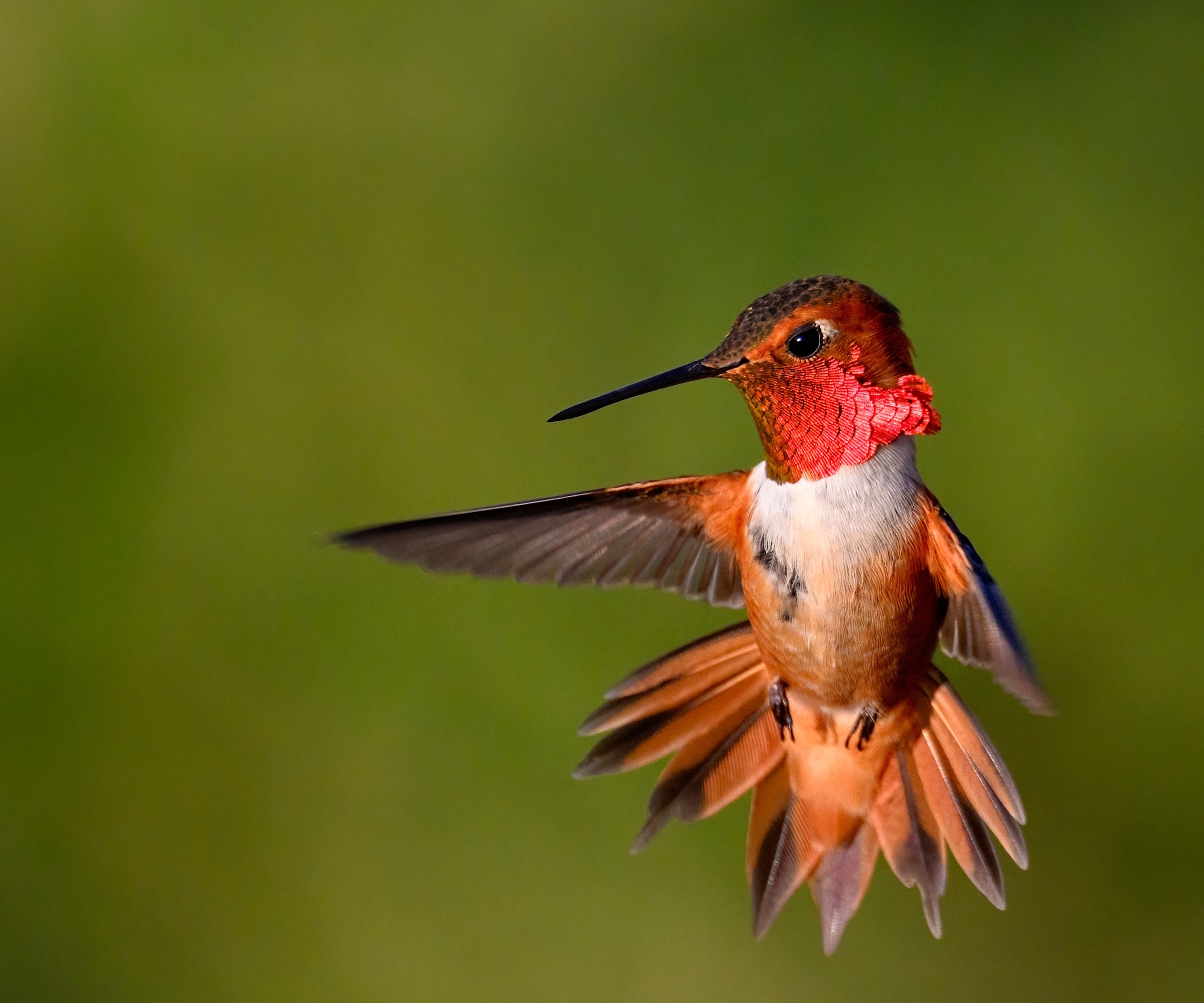
In the southwestern United States, where Arizona, Colorado, New Mexico and Utah meet, broad-tailed hummingbirds, with their long, straight bill and green, almost iridescent coloring, have been reported already this April and May.
What's more, the well-known rufous hummingbird, measuring only two to three inches, has also been sighted near Tucson and outside of Albuquerque. If you live in the Four Corners region, keep your eyes peeled for this species with its red and rusty coloration, seen in the image here.
'Hummingbird migration is all about food and warmth,' says Siobhan Shaw, sustainable gardening expert and founder of Growing to Give. 'As the weather warms and blooms open, they return.'
'Here’s something fascinating,' Siobhan says, 'I’ve personally observed many hummingbirds in the southwest when all their migrating cousins have already headed north.
'Much like geese or ducks that are born in the south and never migrate because they don’t have a northern home to return to, nor ancestral memory of a northern breeding ground, some hummingbirds stick to these southern and warmer areas, around where food and shelter are plentiful.'

Siobhan is the co-founder of Growing to Give, a dynamic global nonprofit dedicated to transforming community-focused food security and agriculture through sustainable farming and gardening practices. Siobhan is a passionate advocate for women's empowerment in agriculture, mentoring women who aspire to careers in the field. Siobhan also continues her decades of podcasting as the host and co-producer of the health and well-being podcast titled Real Talk.
Pacific Coast
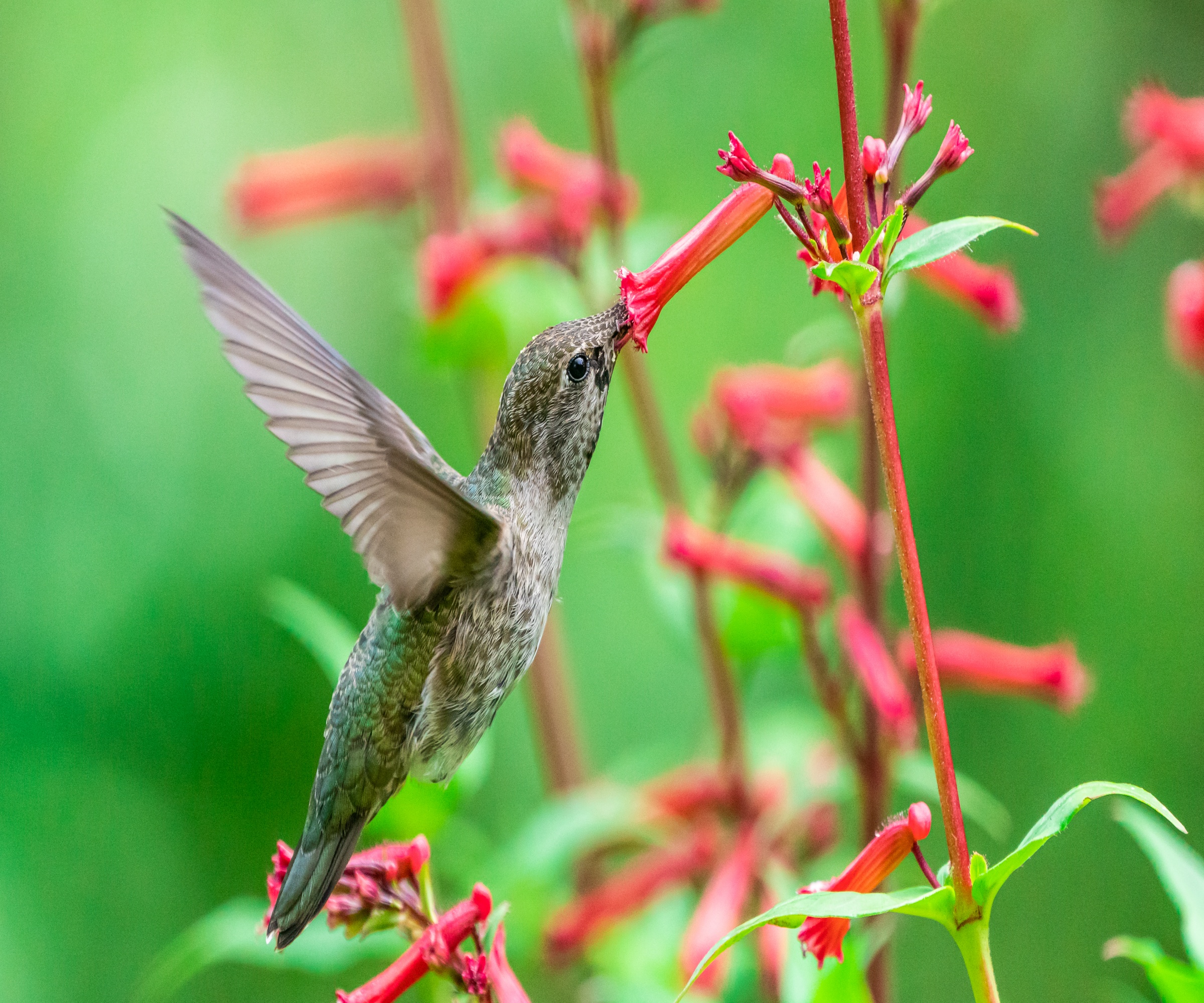
'The western US hosts a wide variety of colorful hummingbirds this month,' continues Patrick. 'Arizona and California, in particular, are home to many wonderful species.
'In California, you can expect to see Allen's hummingbirds during May,' Patrick says. 'As well as the rufous.
'In both Arizona and California, you could also catch a glimpse of the black-chinned and Costa's, the latter of which has a remarkable purple coloration.'
Further north, in Washington, Oregon, Idaho and Montana, there have already been sightings of the calliope, the smallest bird native to the United States and Canada. The male calliope is identifiable by its magenta markings around the neck, whereas the female has a bronze-green back.
'In terms of the best shrubs and the best climbers to attract hummingbirds and best perennials to attract hummingbirds,' Patrick says, 'I would add butterfly bush, flowering milkweed, impatiens, honeysuckle and pink powderpuff to any plot.
'In my experience, learning how to grow salvia is also a good idea, although I find that blue and purple salvia seem to attract more hummingbirds than red salvia, contrary to what you would expect.'
Live blue-flowering salvia plants are available from Amazon.
There are also many container flowers to plant in May that can be grown from seed, including Thunbergia, trumpet vine and cosmos. Our guide has more information on some unique flowers to plant for pollinators.
FAQs
How can I support backyard hummingbirds during May?
'Keep your borders full of nectar-rich flowers and put your hummingbird feeders out this month,' Siobhan says. 'And, importantly, keep them clean.' Use something like this bird feeder cleaner, available at Amazon, to keep the feeding stations and ports disease-free. 'You will find more than just the hummers sipping on the sweet and satisfying cocktail. Finches, flickers, woodpeckers and bees do too!'
If you think that a hummingbird may be sheltering in your yard, avoid pruning or trimming this month, and keep an eye on your shrubs and hedges. Our guide on how to stop hummingbird nests has more information.
For more wildlife garden ideas, see our guide on how to help hoverflies in your yard, and fill your borders with pollinators this spring and summer.
Shop hummingbird accessories

Thomas is a Content Editor within the Gardens Team at Homes and Gardens. He has worked as a professional gardener for both public spaces and private estates, specializing in productive gardening, growing food and flowers. Trained in Horticulture at the Garden Museum, he has written on gardening and garden history for various publications, including The English Garden, Gardens Illustrated, Hortus, The London Gardener and Bloom. He has co-authored a Lonely Planet travel book, The Tree Atlas, due out in 2024.
